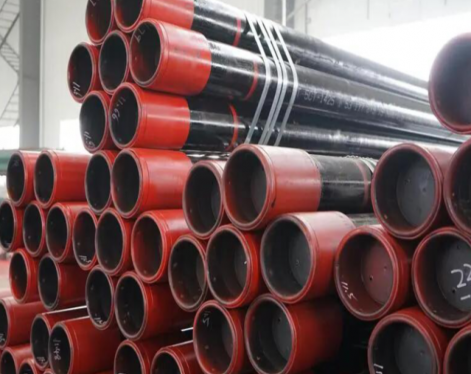Steel casing pipe is a steel pipe used to support the well wall of oil and gas wells to ensure the normal operation of the entire oil well during the drilling process and after completion. Each well uses several layers of casing according to different drilling depths and geological conditions. After the casing is lowered into the well, cement is used for cementing. Unlike oil pipes and drill pipes, it cannot be reused and is a one-time consumable material. Therefore, the consumption of steel casing pipe accounts for more than 70% of all oil well pipes.
The method of installing steel casing pipe mainly includes the following steps:
1. Preparation
Ensure the safety of the working area and prepare the required tools and materials, including oil casing, cement, sealant, etc.
2. Positioning and measurement
Determine the length and quantity of the casing according to the depth and geological conditions of the well. Each well uses several layers of casing according to different drilling depths and geological conditions.

3. Install casing
After drilling is completed, the oil casing is lowered into the well one by one and connected together by threading or welding. Casing operation requires the use of special casing equipment and tools to ensure the smooth entry of casing and the reliability of connection. After the casing is lowered into the well, cement cementing is used. Unlike oil pipes and drill pipes, it is a disposable consumable material and cannot be reused.
Special installation method: In some special cases, such as horizontal wells and large-reach wells, special oil casing installation methods may be required. For example, in horizontal wells, the method of continuous tubing casing can be used; in large-reach wells, the method of rotary guide casing can be used.
4. Sealing and fixing
After the casing is lowered into the well, cementing operations are required to fill the annular space between the casing and the well wall with cement slurry to fix the casing and prevent the cross-flow of formation fluids. Cementing operations require the use of cementing equipment and cement slurry to ensure that the cementing quality meets the requirements. Use sealants or special glue to ensure the sealing between the casing and the well wall to prevent oil and gas leakage.
5. Inspection and adjustment
After completing the installation, perform necessary inspections to ensure that all sleeves are installed correctly without leakage or looseness.
6. Records and reports
Record the details of the installation process, including the type of sleeves used, quantity, installation date, etc., for future reference and maintenance.
In short, the installation method of petroleum steel casing pipe needs to be selected according to the specific well type and operating requirements to ensure the installation quality of the casing and the safety of the oil and gas well.
The method of installing steel casing pipe mainly includes the following steps:
1. Preparation
Ensure the safety of the working area and prepare the required tools and materials, including oil casing, cement, sealant, etc.
2. Positioning and measurement
Determine the length and quantity of the casing according to the depth and geological conditions of the well. Each well uses several layers of casing according to different drilling depths and geological conditions.

3. Install casing
After drilling is completed, the oil casing is lowered into the well one by one and connected together by threading or welding. Casing operation requires the use of special casing equipment and tools to ensure the smooth entry of casing and the reliability of connection. After the casing is lowered into the well, cement cementing is used. Unlike oil pipes and drill pipes, it is a disposable consumable material and cannot be reused.
Special installation method: In some special cases, such as horizontal wells and large-reach wells, special oil casing installation methods may be required. For example, in horizontal wells, the method of continuous tubing casing can be used; in large-reach wells, the method of rotary guide casing can be used.
4. Sealing and fixing
After the casing is lowered into the well, cementing operations are required to fill the annular space between the casing and the well wall with cement slurry to fix the casing and prevent the cross-flow of formation fluids. Cementing operations require the use of cementing equipment and cement slurry to ensure that the cementing quality meets the requirements. Use sealants or special glue to ensure the sealing between the casing and the well wall to prevent oil and gas leakage.
5. Inspection and adjustment
After completing the installation, perform necessary inspections to ensure that all sleeves are installed correctly without leakage or looseness.
6. Records and reports
Record the details of the installation process, including the type of sleeves used, quantity, installation date, etc., for future reference and maintenance.
In short, the installation method of petroleum steel casing pipe needs to be selected according to the specific well type and operating requirements to ensure the installation quality of the casing and the safety of the oil and gas well.









